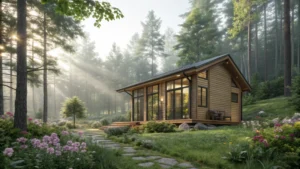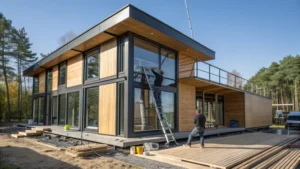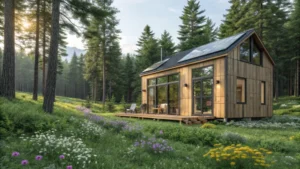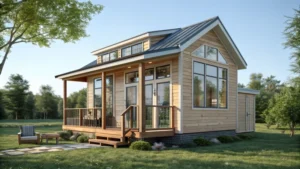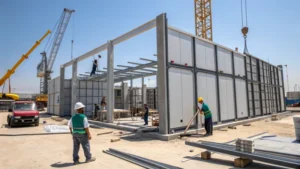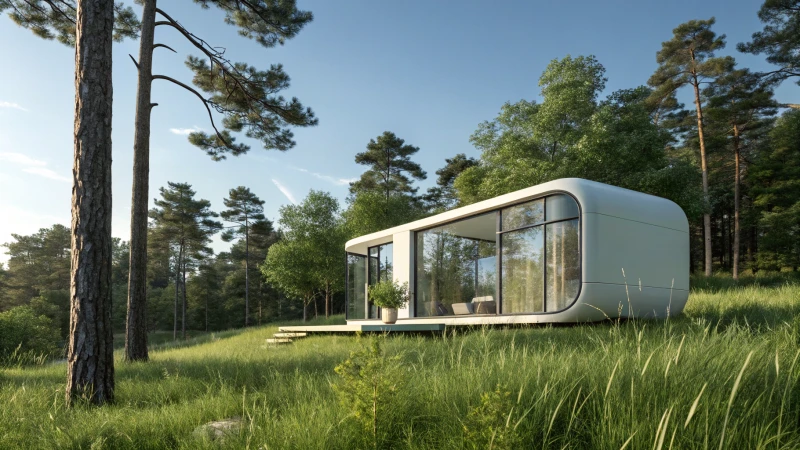
Imagine living in a tiny, efficient space that revolutionizes urban living.
Capsule houses blend benefits like space efficiency, affordability, and eco-friendliness with drawbacks such as limited privacy and space. Ideal for singles or couples, they may not suit larger families.
I've always been fascinated by the idea of living minimally, so when I first heard about capsule houses, it was like a light bulb went off. These compact homes are designed to make the most out of small spaces, and for someone like me who values sustainability and innovative living solutions, they seem like a dream. But just like any dream, there are realities to consider.
One of the main perks of capsule houses is their space efficiency. They're perfect for urban areas where land is scarce and pricey. I remember visiting a bustling city where every square foot felt precious, and it was clear how these houses could fit perfectly into that environment. Plus, they're cost-effective because they're prefabricated, which slashes labor costs and reduces waste.
However, I've heard from families that while the concept is appealing, the limited space can be challenging for those who need more room to breathe or store their belongings. Privacy can also be an issue if you're sharing the space or part of a close-knit community of capsule dwellers.
Ultimately, while capsule houses offer a novel solution to modern living challenges, they're not for everyone. It's all about finding what aligns with your lifestyle and priorities.
Capsule houses are always cost-effective.False
While often cheaper, costs can vary based on location and design.
Capsule houses lack privacy for larger families.True
Compact design limits space, impacting privacy in larger households.
How Do Capsule Houses Maximize Space Efficiency?
Ever wondered how some people live comfortably in spaces no bigger than a parking spot? Let me take you inside the world of capsule houses, where every square inch counts.
Capsule houses maximize space efficiency through creative design, modular building techniques, and adaptable furniture. They turn tiny areas into functional living spaces, ensuring you don’t compromise on comfort or style.
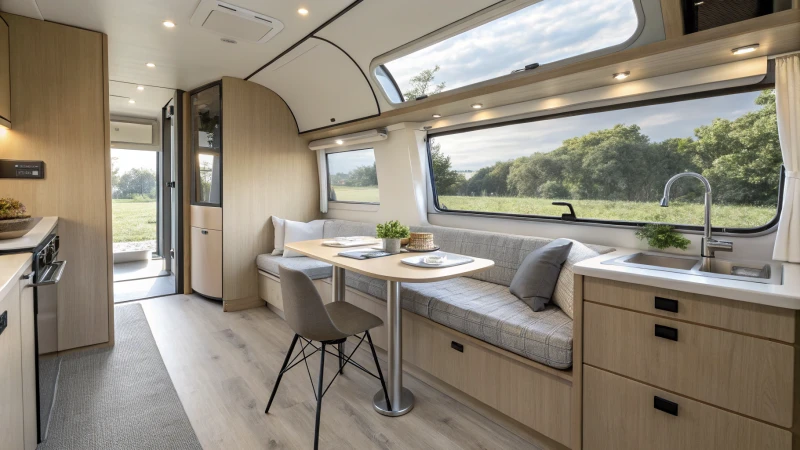
Innovative Design Principles
I remember the first time I stepped into a capsule house. It was like walking into a magician’s den where everything had a hidden purpose. The design cleverly utilized vertical spaces and built-in furniture to double up on functionality. Think of wall beds that disappear when you don’t need them, leaving room for a cozy living area during the day.
Modular Construction
The beauty of modular construction1 is its flexibility. You can customize and rearrange these homes to fit your lifestyle or specific site constraints. Imagine having the ability to stack or expand modules based on your current needs—like adding a new room just because you can!
| Feature | Benefit |
|---|---|
| Vertical Storage | Maximizes storage without floor use |
| Foldable Furniture | Increases usable space when needed |
| Compact Layout | Ensures all areas are accessible |
Multi-functional Furniture
One of the coolest things about capsule homes is their multi-functional furniture. Picture this: your dining table transforms into a work desk by day, and your comfy sofa turns into a bed at night for guests. It's like living in a space that's constantly adapting to your needs.
Smart Technology Integration
Then there’s the tech side of things. Many capsule homes come with smart technology2 that adjusts the environment to suit your mood or the time of day. Imagine walking into a perfectly lit room with just the right temperature as you return home from a long day.
Sustainability Considerations
As someone who values sustainability, I appreciate how these homes often feature eco-friendly materials and energy-efficient systems. Using things like solar panels or green roofs, they minimize environmental impact while maximizing resource efficiency.
| Material | Sustainability Benefit |
|---|---|
| Recycled Steel | Reduces raw material consumption |
| Bamboo Flooring | Rapidly renewable resource |
| Insulated Panels | Enhances energy efficiency |
Explore how sustainable materials3 are paving the way for greener living by providing eco-friendly solutions without sacrificing style or comfort.
Understanding how capsule houses maximize space efficiency is about appreciating their innovative designs, adaptable construction methods, and the seamless integration of technology and sustainability practices. These homes redefine modern living by turning small spaces into efficient and comfortable sanctuaries.
Capsule houses use modular construction for adaptability.True
Modular construction allows customization and rearrangement, enhancing adaptability.
All capsule houses have green roofs for sustainability.False
Not all capsule houses incorporate green roofs, though some do for sustainability.
Are Capsule Houses Really More Affordable Than Traditional Homes?
Ever wondered if those tiny, futuristic capsule houses are actually a budget-friendly alternative to traditional homes?
Capsule houses generally cost less than traditional homes due to lower construction expenses, space efficiency, and minimal maintenance requirements. However, customization needs and zoning regulations can impact overall affordability.
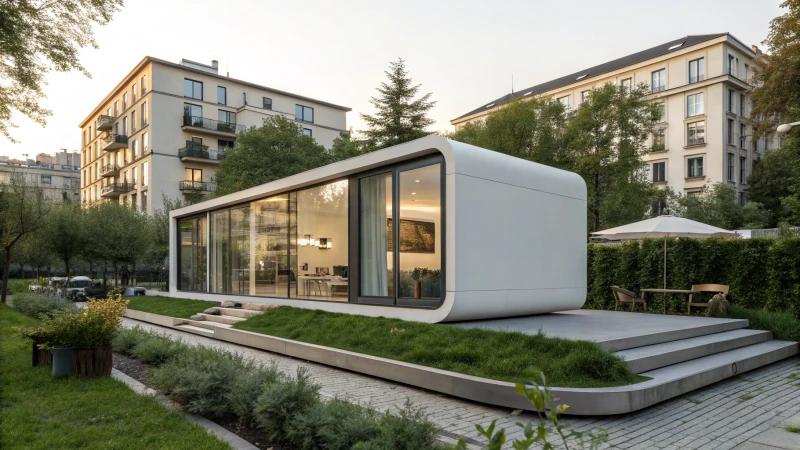
I remember the first time I stumbled upon the concept of capsule houses. It was during a visit to a bustling trade show in Shanghai. The idea of living in a compact, efficient space immediately resonated with me, especially as I watched housing prices climb higher each year. I thought, "Could this be the answer to affordable living?"
Understanding Capsule Houses' Cost Structure
Capsule houses often come prefabricated, which means they can be built off-site and then transported to your plot of land. This process cuts down on labor costs significantly and reduces material waste. Imagine watching your new home arrive like a piece of IKEA furniture, ready to be assembled in a fraction of the time it takes to build a traditional house.
Space Efficiency and Cost
Their clever design allows capsule houses to fit into smaller plots, which can save you a bundle if you’re buying land in a pricey urban area. When I saw how these houses could snugly fit into limited spaces without sacrificing comfort, it struck me as the perfect blend of innovation and practicality.
| Feature | Capsule Houses | Traditional Homes |
|---|---|---|
| Construction Time | Days to Weeks | Months |
| Land Requirement | Small Plots | Larger Lots |
| Material Usage | Minimal | Extensive |
Long-Term Maintenance Costs
Let’s face it, maintaining a home can be costly and time-consuming. Capsule houses are designed with energy efficiency in mind, using materials that require less upkeep. Many even come equipped with solar panels and energy-efficient windows—features that can drastically reduce your utility bills.
Customization and Additional Costs
While you might be tempted to trick out your capsule house with all the latest bells and whistles, keep in mind that high-end features can quickly add up. A friend of mine once decided to add a custom kitchen to his capsule house, only to realize the costs rivaled those of his previous traditional home.
Regulatory and Zoning Challenges
Zoning laws are another hurdle you might face when considering a capsule house. Some areas just aren’t ready to embrace this innovative living solution, which can lead to additional expenses and delays. In contrast, setting up a traditional home in an established residential area might mean fewer hoops to jump through.
When weighing your options, it's important to consider these factors. While capsule houses offer a unique4 and potentially more affordable living solution, understanding all the associated costs and benefits is key. Explore different housing models5 to find the best fit for your lifestyle and budget.
Capsule houses have lower construction costs.True
Built off-site, capsule houses reduce labor and material waste.
Traditional homes require smaller plots of land.False
Traditional homes need larger plots, increasing land acquisition costs.
What are the environmental benefits of capsule housing?
Imagine a world where your home not only saves you money but also helps save the planet. That's what capsule housing offers.
Capsule housing provides environmental benefits by utilizing sustainable materials, boosting energy efficiency, and reducing land use. These compact units lower carbon footprints and resource consumption, making them an ideal choice for eco-friendly living.
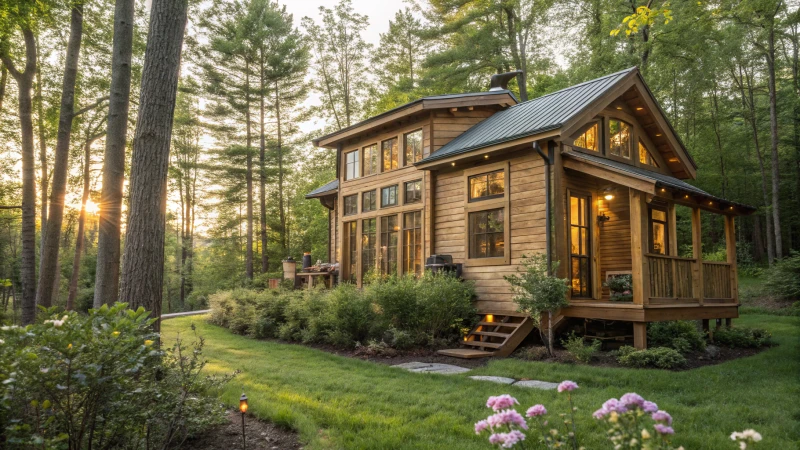
)
Eco-Friendly Materials
I remember when I first heard about capsule houses and their use of eco-friendly materials like bamboo and recycled steel. It was at a trade show, where a small model caught my eye. I thought to myself, "Wow, this tiny house can make a big difference!" Using materials like reclaimed wood not only helps reduce waste6 but also significantly lowers the carbon footprint of construction. For instance, did you know that using recycled steel can save up to 75% of the energy required compared to traditional steel production? That statistic stuck with me and made me appreciate these innovative homes even more.
Energy Efficiency
Many capsule homes come equipped with solar panels, energy-efficient windows, and advanced insulation. These features aren't just fancy add-ons; they can dramatically decrease energy consumption. I read a study that found homes with these enhancements can reduce their energy use by up to 40% compared to conventional homes. Can you imagine cutting down your utility bills almost in half?
| Feature | Benefit |
|---|---|
| Solar Panels | Reduces reliance on fossil fuels |
| Energy-efficient Windows | Minimizes heat loss |
| Advanced Insulation | Maintains consistent temperature |
Minimal Land Use
The compact design of capsule housing means these homes make the most of limited space. This is especially valuable in high-density urban areas where land is scarce. By occupying less space, capsule homes help preserve natural landscapes and combat urban sprawl. It's like living in harmony with the environment.
Reduced Resource Consumption
The prefabricated nature of capsule housing is fascinating because it results in less material wastage during construction. This efficiency extends to the use of resources like water and electricity during the building process. I came across a comparison study7 showing that prefab homes generate up to 30% less waste than traditional construction methods. Such insights make me hopeful for a sustainable future.
Supporting Sustainable Communities
Capsule housing isn't just about individual eco-friendliness; it's about fostering sustainable communities. By promoting shared resources like communal gardens or green roofs, these homes encourage residents to engage in sustainable practices. This not only fosters a sense of community but also further reduces environmental impact.
Learn more about sustainable community practices8. This could be beneficial for those interested in reducing their personal environmental footprint through community involvement.
Capsule houses use recycled steel to lower carbon footprint.True
Recycled steel in capsule houses saves up to 75% energy versus new steel.
Capsule housing increases urban sprawl due to its compact design.False
Capsule housing reduces urban sprawl by maximizing space in high-density areas.
Can Capsule Houses Be Customized to Fit Personal Needs?
Ever wondered if you could take a tiny, efficient capsule house and make it entirely your own?
Absolutely! Capsule houses can be tailored to meet your personal needs through layout changes, enhanced storage solutions, and premium material upgrades, offering flexibility to fit your lifestyle and aesthetic preferences.
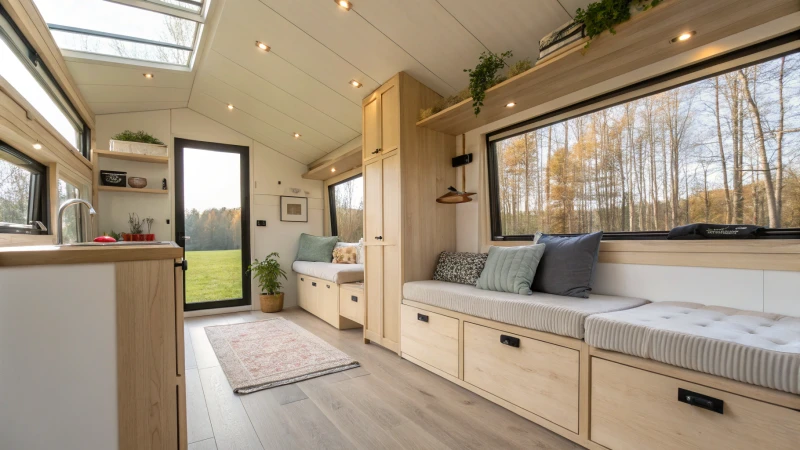
Customization Options Available for Capsule Houses
When I first stumbled upon the idea of capsule houses, my curiosity was piqued by their compact charm. As someone who loves efficiency, the thought of customizing such a space felt like a thrilling puzzle waiting to be solved. Here's what I've found out about making these little homes truly personal:
-
Layout Adjustments: Imagine having the ability to tweak the interior layout to suit your lifestyle. You can add or remove partitions to create cozy nooks or open spaces. When working from home became my norm, I realized the importance of having a dedicated workspace, and capsule houses offer just that flexibility to include a work-from-home space9.
-
Material Upgrades: I’ve always been drawn to sustainable living, so knowing I could opt for bamboo flooring or recycled steel structures in my capsule home was a game-changer. These choices not only enhance the aesthetic appeal but also align with my eco-conscious goals.
-
Additional Storage Solutions: Living minimally has its perks, but sometimes you need clever storage solutions. From hidden compartments to lofted beds with storage underneath, capsule houses offer innovative ways to maximize every inch of space.
Tailoring Capsule Houses for Different Needs
Every person has unique needs, and capsule houses can cater to them beautifully:
-
For Families: Adding extra rooms or creating shared spaces through layout changes makes these houses adaptable.
-
For Remote Workers: Integrating workspaces with adequate lighting and soundproofing is a lifesaver.
Comparing Standard and Custom Capsule Houses
| Feature | Standard Capsule House | Customized Capsule House |
|---|---|---|
| Layout | Fixed | Adjustable to preference |
| Materials | Basic | Premium options available |
| Storage | Limited | Tailored solutions |
| Cost | Economical | Varies based on customization |
Challenges in Customizing Capsule Houses
While the idea of customization sounds fantastic, I've learned there are some challenges along the way:
-
Cost Implications: Adding custom features can drive up costs. High-end finishes might push the budget beyond standard designs.
-
Regulatory Barriers: Modifying structural elements often requires local authority approvals, which can be a hurdle.
-
Delivery and Installation: Custom designs can complicate logistics, particularly in remote areas, affecting delivery times.
Understanding these aspects helps me—and hopefully you too—make informed decisions. For further insights on customization considerations10, looking into specific providers can be incredibly helpful.
Capsule houses can have their layouts modified.True
Manufacturers offer options to adjust internal layouts for personalized zones.
Custom capsule houses are always more economical than standard ones.False
Customization can increase costs due to premium materials and design changes.
Conclusion
Capsule houses offer space efficiency, affordability, and sustainability but face challenges like limited privacy and zoning issues. Ideal for singles or couples, they may not suit larger families.
-
Discover how modular construction enhances flexibility and customization in building design. ↩
-
Learn how integrating smart technology can optimize living conditions and space utilization. ↩
-
Find out which eco-friendly materials are transforming housing design for sustainability. ↩
-
Learn how off-site construction reduces labor and material costs, making prefabricated homes more affordable. ↩
-
Gain insights into the different housing models to better understand their unique benefits and challenges. ↩
-
Learn how recycled materials in construction can significantly reduce waste and energy consumption. ↩
-
Explore how prefab homes compare to traditional homes in terms of material waste and resource efficiency. ↩
-
Discover how engaging in sustainable community practices can help minimize your environmental impact. ↩
-
Discover effective strategies for integrating a functional work-from-home area in compact living spaces. ↩
-
Explore potential challenges faced when customizing capsule houses and learn how to overcome them effectively. ↩



